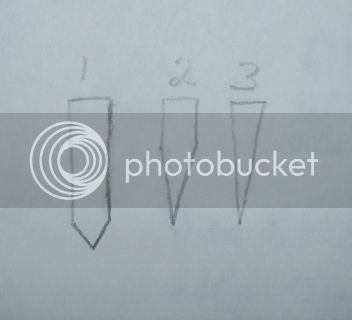Ideally, you need a heat source that will bring the blade up to red-orange color in dim light. Or, one or two full shades of red above non-magnetic. The heat needs to be even for best results, but this is only critical for the blade, and not necessary for the tang section. Be careful to not over heat, especially the point. If it goes to yellow, consider it screwed. Once up to the desired heat, quench in very warm canola oil, or other cooking oil until you can touch it bare handed without getting burned. As soon as it goes is in the quench, move it fore and aft, or up and down, but never side ways. Quenching point down reduces warping, but it will work fine enough edge first, and you can even quench only the edge, but I think you will get better results with a full quench. Then temper immediately at 400° for two one hour tempers. Use a separate oven baking thermometer, and have the oven pre-heated if possible. You will get a better temper if the blade is covered with dry sand to reduce temp fluctuations when the oven cycles. Quench in water after each temper heat.
Now, since we do not know what your heat did to the steel when you straightened the spring, you might want to heat cycle the blade before the hardening process. This will guarantee small grain size, and reduce any stresses that are probably present, and reduce warping. First heat to bright red-orange, while taking care with the point, and let air cool. Then heat to low red orange and air cool. Then to just as it goes a tad more than non-magnetic and air cool. Then do 2 or 3 dull red, below non-magnetic heats air cooling between. Then it should be ready to harden and temper, and should make a fine blade for you.
 [/img]
[/img]





